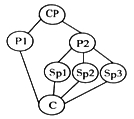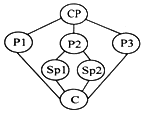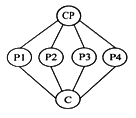题型:阅读理解 题类:模拟题 难易度:普通
湖南省永州市2018届高三下学期英语第三次模拟考试试卷
The organic food has gained a lot of [popularity as they are being considered as healthier and tastier. A fair number of people advocate a large-scale shift to organic farming from conventional agriculture. But this might not seem well-founded.
Since the mid-19th century, conventional industrial agriculture has become incredibly efficient on a simple land to food basis. Conventional farming gets more and more crop per square foot of land, which can mean less wilderness needs to be transformed to farmland.
To make farming more efficient, conventional agriculture uses a significant amount of synthetic fertilizer(合成肥料)each year, and all that nitrogen(氮)enables much faster plant growth. However, the cost is paid in vast polluted dead zones at the months of many of the world's rivers, because much of the nitrogen ends up running off the soil and into the oceans. This also makes conventional farming one of the major threats to the environment.
To weaken the environmental impact of agriculture, improve soil quality as well as produce healthier foods, some farmers have turned to organic farming. Environmentalists have also welcomed organic food as better for the planet than the food produced by agricultural corporations. Organic practices — refusing artificial fertilizers and chemical pesticides –are considered far more sustainable. Sales of organic food rose 7.7% in 2010, up to $26.7 billion—and people are making those purchases for their moral senses as much as their tongues.
Yet a new meta-analysis in Nature does the math and comes to a hard conclusion: organic farming produces 25% fewer crops on average than conventional agriculture.
In the Nature analysis, scientists performed an analysis of 66 studies comparing conventional and organic methods across 34 different crop species, from fruits to grains. They found that organic farming delivered a lower output for every crop type, though the difference varied widely. For crops like fruit trees, organic trailed(落后于)conventional agriculture by just 5%. Yet for major grain crops and vegetables – all of which provide the world's main calories – conventional agriculture outperformed organics by more than 25%.
What that means is that while organic farming may be more sustainable than conventional agriculture, there are trade-offs(此消彼长)with each. So an ideal global agriculture system may borrow the best from both systems rather than upholding merely organic or conventional practices.
CP: Central Point P: Point Sp: Sub-point(次要点) C: Conclusion
 B、
B、 C、
C、 D、
D、
试题篮